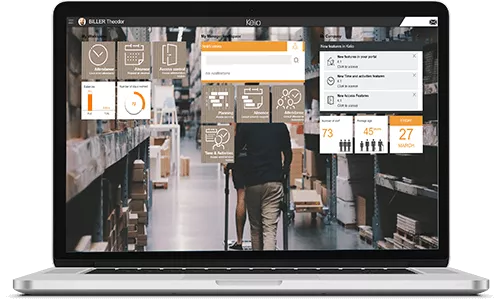Workforce management is one of the responsibilities that falls not only to the HR department but also to every team manager in each department. Between the difficulties of scheduling, legal obligations and working constraints, how can we help managers organise their employees shifts patterns and daily activities?
Workforce management is an operational challenge because it ensures that the right people are available, in the right place, at the right time, and in a sufficient quantity to carry out the work. However, managing working time and activities must also meet and comply with legal obligations, particularly legal working hours and rest periods.
To do this, team managers and HR must track and clock the individual working hours of each employee. This is a time-consuming process and only adds little value. Fortunately, it is possible to optimise and decentralise time management more efficiently within the organisation.
Time and Attendance management
Time and attendance management must allow any team manager and company director to have a global view of the distribution of human resources and working time allocated to each activity of the company.
To do this, it is therefore necessary to be aware of the information relating to each employee in order to anticipate future needs while complying with legal obligations.
Many variables come into play in time management:
- Attendance (arrival, departure, break time)
- Absence management (such as annual leave, sickness)
- The calculation of overtime and the monitoring of compensatory rest
- Management of different types of employees, such as full-time, part-time, shift workers.
- Monitoring of specific working hours (such as mandatory minimum rest period, maximum hours worked, night work).
In many companies, these tasks are partly managed by managers who compile and communicate the information to the HR department for recording and analysis. Information can sometimes be accidentally entered multiple times which can have significant repercussions in terms of penalties for the company.
However, using a collaborative or "self-service" portal would reduce this time-consuming process while also securing and speeding up the internal process. In addition, this type of tool makes it possible to involve employees which is an important motivational factor.

Decentralisation of time and attendance management
The decentralisation of time and attendance management requires opening up the process to the other employees in the organisation. Just because software is HR-oriented doesn't mean it should only be used by the HR department. It can and should be open to all in order to promote the distribution of information. This is one of the advantages of Human Resources Information System software (HRIS). Despite its very specific name, it is not exclusively reserved for the HR function.
HRIS is software intended for the management of human resources in the broadest sense. To do this, it consists of different modules adapted to the specific needs of each department of the company. All the company's stakeholders have a role to play in providing such a tool, including employees and managers. In addition to promoting a better flow of information, this tool strengthens the link between employees and managers.
Focus on employees' personal space
In terms of time and attendance management, the use of a personal HR portal allows employees to fill in or check the HR information that concerns them and to make their requests directly online. The manager then receives a notification on their own portal.
This tool relieves the manager of a considerable number of time-consuming tasks by automating them and speeding up the validation process. The HRIS is accessible online, from a PC, tablet or smartphone; accounting for remote working employees.
In practice, this type of interface allows:
- Virtual clocking in and out for each employee
- Automatic clocking in of actual working hours
- The confirmation of attendance, for example for managers
- The submission and monitoring of leave requests by employees and their approval in real time by the manager
- The submission and follow-up of remote working requests by employees
- Individual and group planning consultation
- The assignment of specific activities carried out during working hours
- Consultation and follow-up of employees: training, medical examinations, professional interviews, etc.
- The transfer of quotas of hours or days of leave
Thanks to this simple platform, employees’ involvement in time management allows all stakeholders to save time and improves response times (leave validation, payroll management, scheduling, etc.).

Working time management does not only concern the HR department and the manager, but also requires the involvement of all employees to streamline and speed up processes. Simplify the management of your company's time and activities with Kelio's HRIS software.



